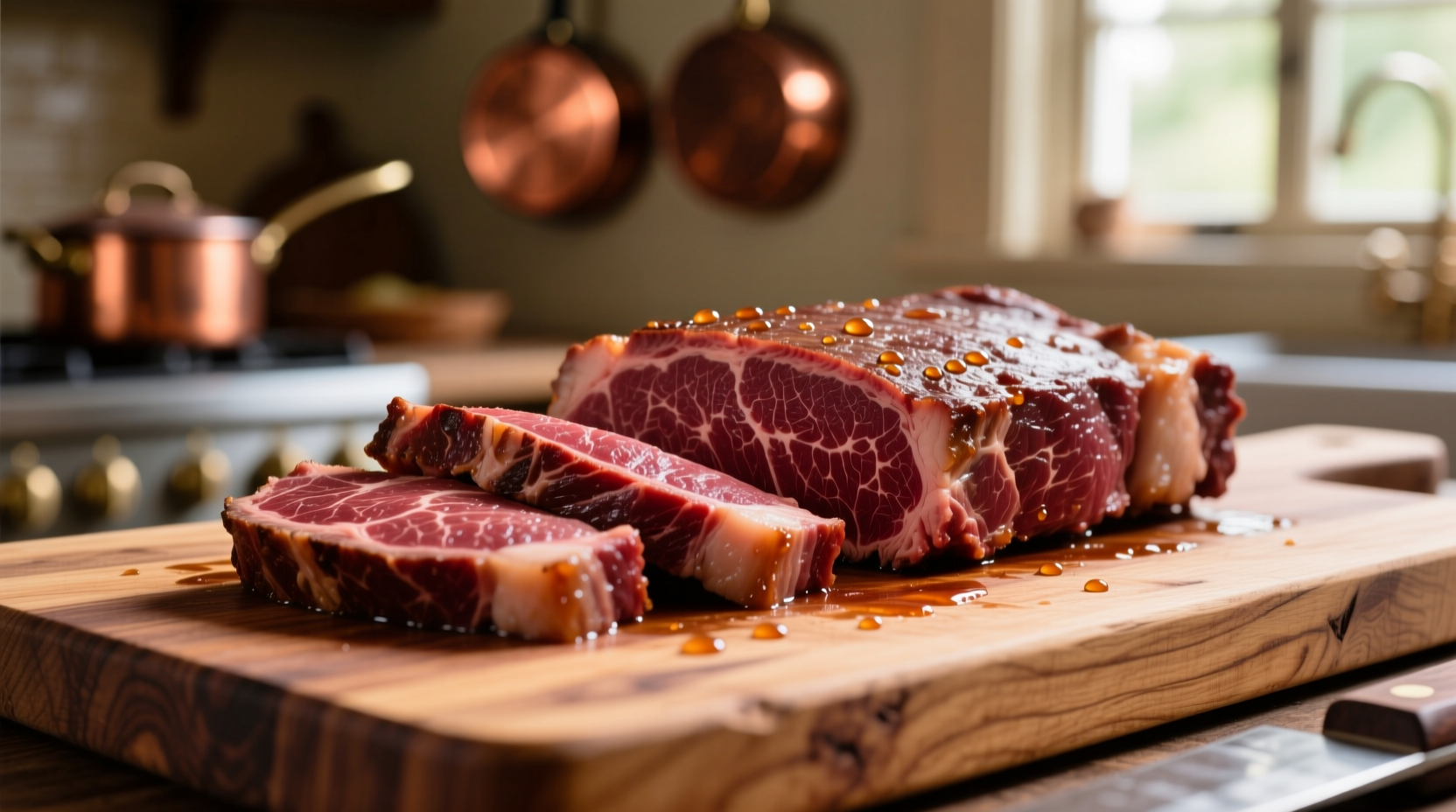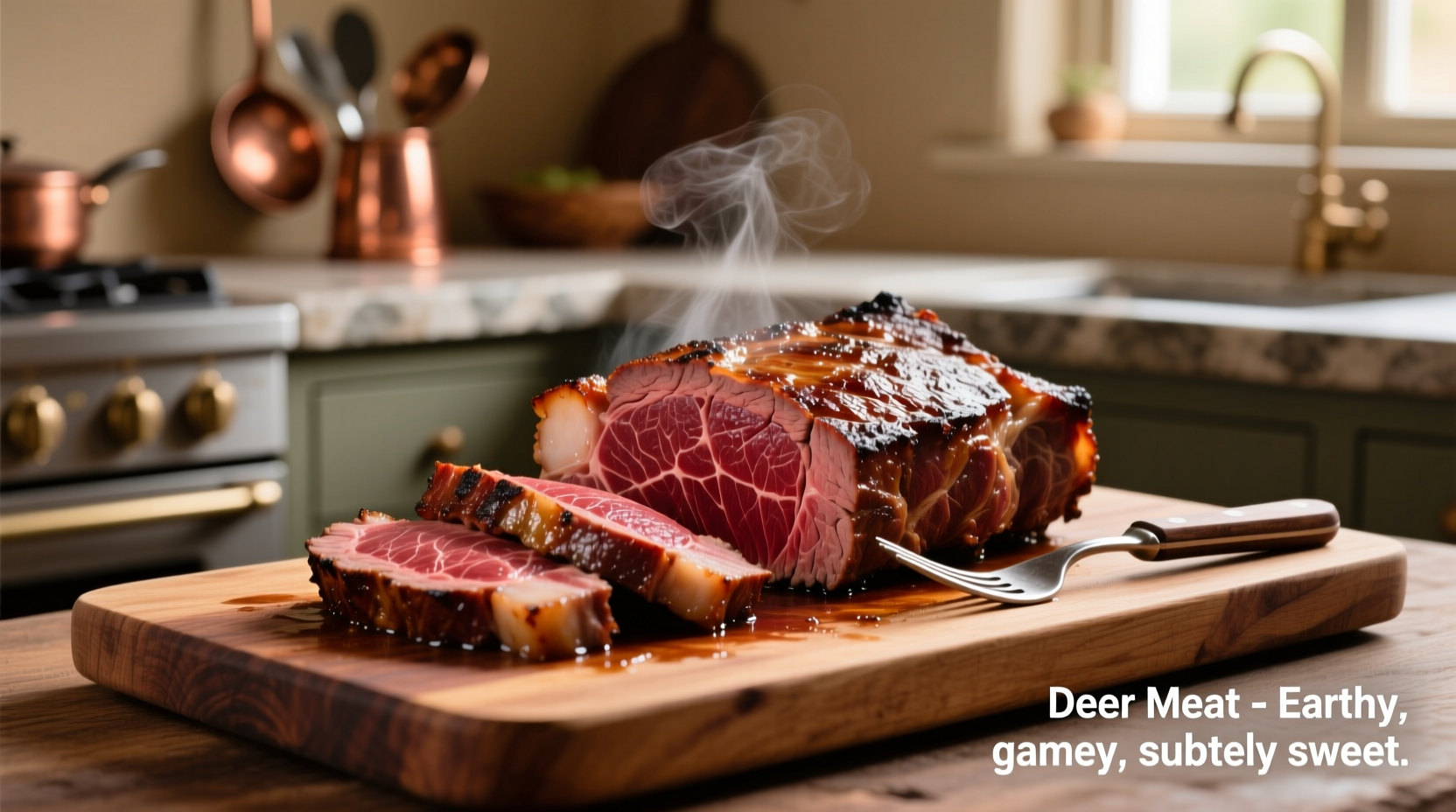If you're wondering what deer meat tastes like, here's the direct answer: Venison has a rich, earthy flavor that's leaner and more intense than beef, with subtle grassy or acorn notes depending on the deer's diet. When properly prepared, it offers a clean, slightly sweet taste without excessive 'gaminess' that many expect.
Curious about how deer meat compares to your favorite cuts of beef or whether that venison roast in your freezer will satisfy your family? You're not alone. Hunters, adventurous home cooks, and food enthusiasts regularly seek to understand venison's distinctive flavor profile before trying it. Understanding what affects deer meat's taste helps you prepare it properly and enjoy its unique qualities.
Breaking Down Venison's Flavor Profile
Venison's taste isn't just "gamey" as many assume. This lean red meat offers a complex flavor experience shaped by several factors. Unlike grain-fed beef, deer consume natural forage, creating a more pronounced, clean-tasting meat with less marbling. The flavor often carries subtle hints of the deer's natural diet—whether that's acorns in the fall, fresh spring greens, or browse from forested areas.
Professional chefs describe venison as having a deeper red color and tighter grain than beef, with flavor notes that can range from mildly sweet to robustly earthy. When harvested and processed correctly, venison shouldn't have an overpowering 'wild' taste that many fear. Instead, it delivers a clean, satisfying flavor that stands well on its own or with complementary seasonings.
| Meat Type | Flavor Characteristics | Fat Content | Texture |
|---|---|---|---|
| Deer (Venison) | Earthy, slightly sweet, clean finish | 2-3% (very lean) | Fine-grained, firm texture |
| Beef (Grass-fed) | Robust, slightly mineral | 5-7% | More marbling, tender |
| Beef (Grain-fed) | Milder, buttery | 10-15% | Softer texture |
| Pork | Neutral, slightly sweet | 15-20% | Softer, more delicate |
Why Venison Tastes Different Than Farm-Raised Meats
The distinctive flavor of deer meat primarily comes from its natural diet and active lifestyle. Wild deer constantly move through varied terrain, resulting in leaner meat with less intramuscular fat than domesticated animals. According to the USDA Food Safety and Inspection Service, wild game typically contains 50% less fat than commercial beef, which directly impacts both flavor and cooking requirements.
Several specific factors influence venison's taste:
- Diet variations: Deer eating acorns develop nuttier flavors, while those consuming sage or other browse reflect those herbal notes
- Age of the animal: Younger deer (fawns) have milder flavor than mature bucks
- Processing methods: Proper field dressing and cooling prevent 'gamey' flavors
- Season of harvest: Fall-harvested deer often taste different than spring deer due to dietary changes

Managing Venison's Flavor: Tips From Culinary Experts
Contrary to popular belief, venison doesn't have to taste 'gamey' if handled properly. The perceived 'gamey' flavor often results from improper field dressing, inadequate cooling, or using older animals rather than being inherent to deer meat itself.
For best results when cooking venison:
- Marinate strategically: Acidic components like buttermilk or vinegar-based marinades can tenderize and mellow strong flavors without overpowering the meat's natural taste
- Monitor cooking temperature carefully: Venison cooks faster than beef due to lower fat content. The USDA recommends cooking venison roasts and steaks to 145°F (medium-rare) with a 3-minute rest time for optimal texture and safety
- Consider fat supplementation: Since venison lacks marbling, many chefs recommend larding with bacon fat or cooking alongside fatty meats
- Rest the meat properly: Allow venison to rest 5-10 minutes after cooking to redistribute juices
Common Misconceptions About Deer Meat Flavor
Many people avoid venison based on misconceptions about its taste. Research from the University of Wisconsin-Madison's Department of Wildlife Ecology shows that properly handled venison from healthy animals in prime condition has minimal 'gamey' characteristics.
The myth that all wild game tastes strongly 'gamey' often stems from:
- Improper field dressing leading to blood contamination
- Harvesting animals during rutting season when hormones affect flavor
- Using older animals rather than younger deer
- Overcooking the lean meat
When prepared correctly, venison offers a delicious, sustainable protein source that many find preferable to conventional meats once they understand how to work with its unique properties.
How to Experience Venison's Best Flavor
If you're trying venison for the first time, start with tender cuts like backstrap or tenderloin prepared medium-rare. These premium cuts showcase venison's best qualities without overwhelming your palate. Pair with complementary flavors like juniper berries, rosemary, black pepper, or fruit-based sauces that enhance rather than mask the meat's natural taste.
For those concerned about venison's reputation for dryness, remember that its leanness requires different cooking approaches than beef. Using a meat thermometer is essential—overcooking by just a few degrees can transform tender venison into dry, tough meat. Many experienced hunters and chefs recommend sous vide preparation for consistent results with this lean protein.











 浙公网安备
33010002000092号
浙公网安备
33010002000092号 浙B2-20120091-4
浙B2-20120091-4